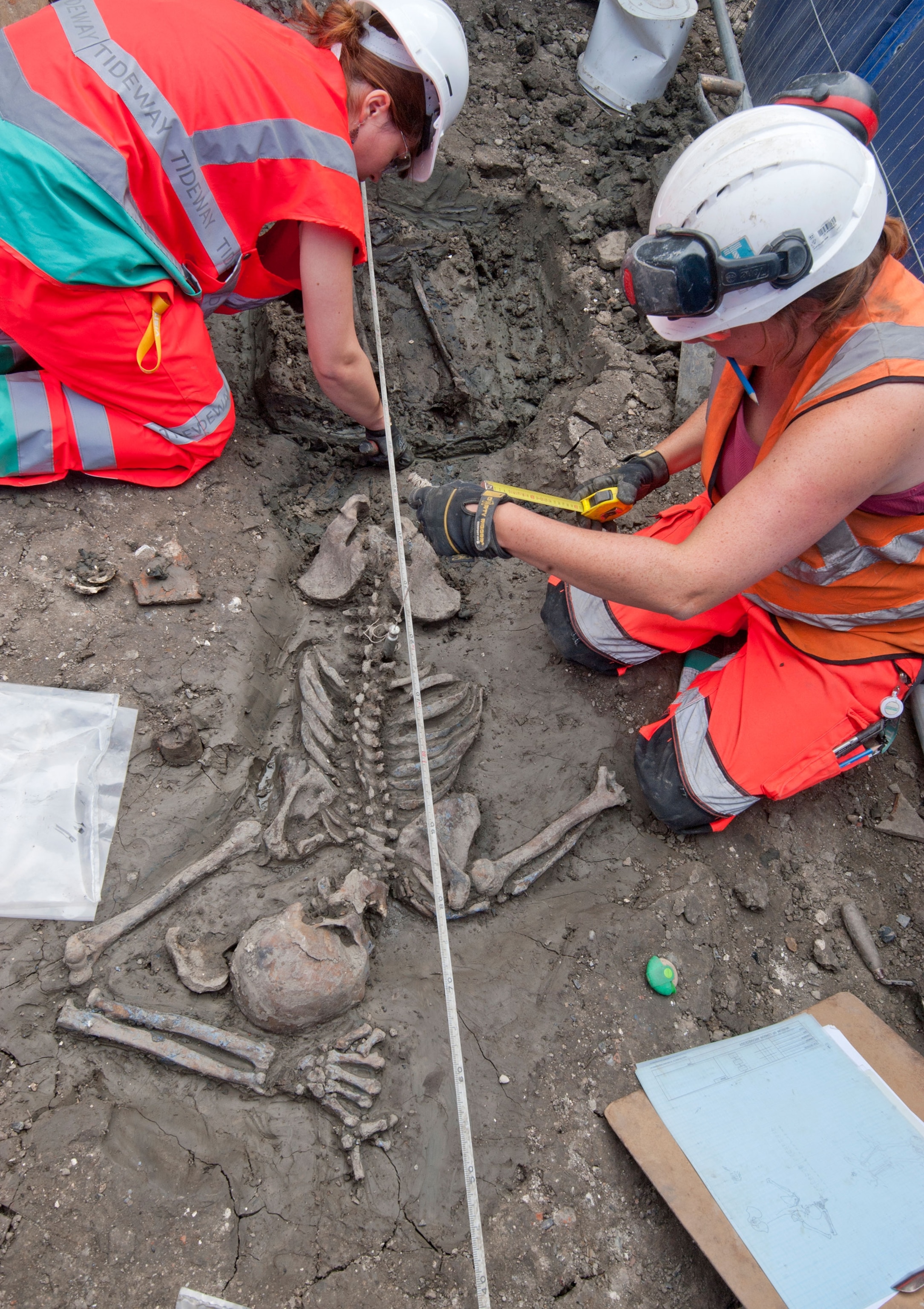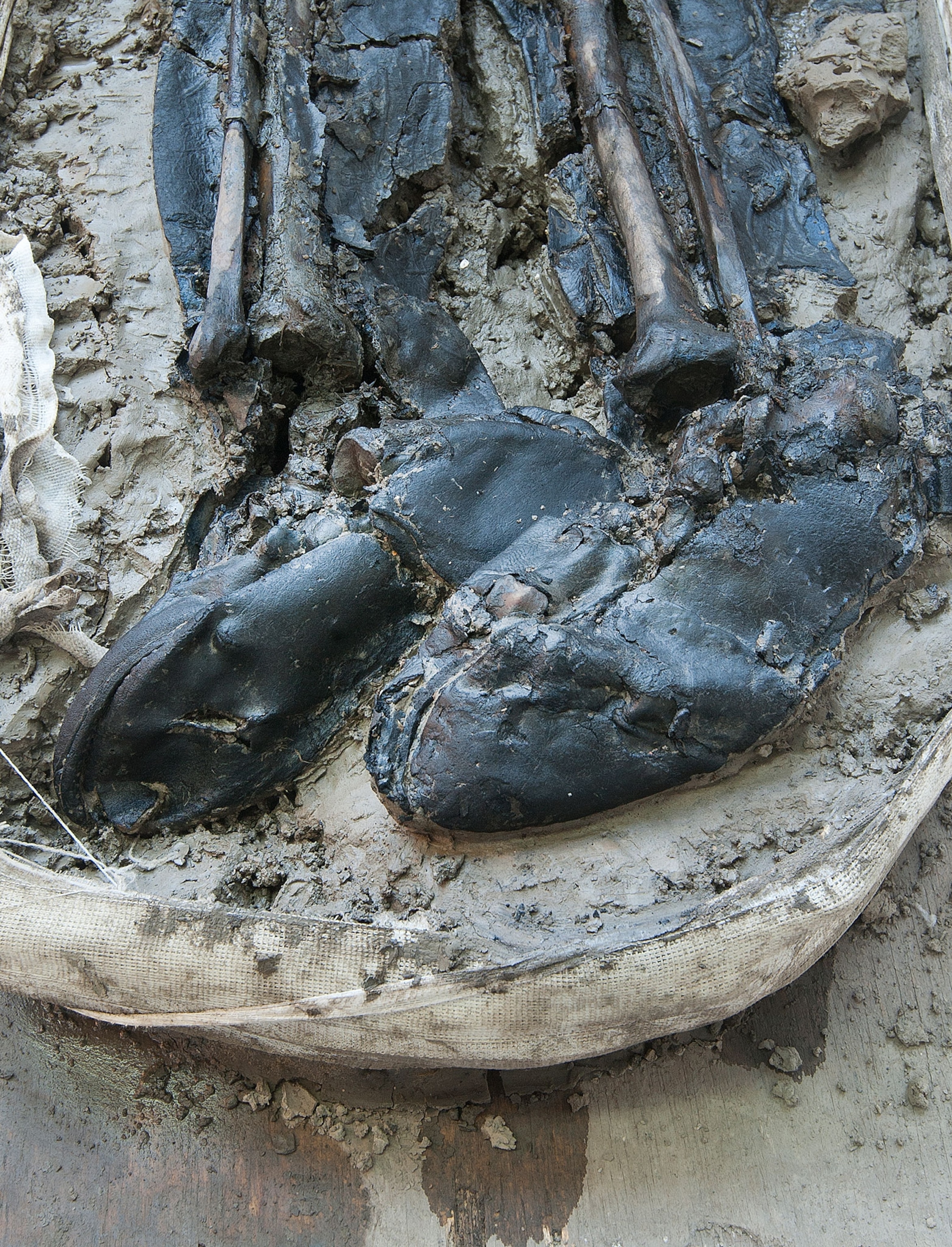Sole Survivors: Unraveling the Mystery of London’s 500-Year-Old Leather-Clad Skeleton

The discovery of a 500-year-old skeleton wearing thigh-high leather boots along the banks of the River Thames in London has piqued the interest of archaeologists and historians alike. This remarkable find not only provides a glimpse into the past but also sheds light on the fashion and daily lives of individuals during the Tudor era in England. As the construction of a new “super sewer” unearths this captivating piece of history, it offers a unique opportunity to explore the intricacies of life centuries ago.
The Remarkable Discovery

In the Bermondsey neighborhood of South London, archaeologists working on the city’s $5.4 billion “super sewer” project made a remarkable discovery – the skeleton of a man believed to date back 500 years, found face-down in the muddy banks of the River Thames. What set this discovery apart was the fact that the skeleton was found wearing thigh-high leather boots, a highly unusual and valuable item during the Tudor era.
The Significance of Leather
According to the MOLA Headland Infrastructure team, the company overseeing the sewer construction project, leather was a highly coveted material during the 15th and 16th centuries in England. The discovery of the well-preserved leather boots on the skeleton suggests that this individual’s death was likely an accident, as it would have been highly unlikely for a corpse to be buried with such a valuable item.
The Boots and Their Implications

The shape and style of the leather boots found on the skeleton have also intrigued the archaeologists. Beth Richardson, a finds specialist for the MOLA team, explains that high boots were not a common sight during the Tudor period, with most people wearing either shoes or ankle boots. This observation led the team to believe that the individual may have been a fisherman, a dock worker, or perhaps a sailor, as these boots would have been more practical for such physically demanding occupations.
The Man Behind the Boots

Further analysis of the skeleton revealed that the individual had extensive degenerative joint disease along his spine and left hip joint, suggesting he was engaged in significant physical labor throughout his life. Osteologist Niamh Carty estimates that the man was likely older than 35 at the time of his death, although the exact cause of his demise remains a mystery.
Conclusion
The discovery of the 500-year-old skeleton wearing thigh-high leather boots along the River Thames in London is a remarkable testament to the enduring power of history. This find not only provides a tangible connection to the past but also offers a unique opportunity to learn more about the daily lives and material culture of individuals during the Tudor era. As the construction of the “super sewer” continues, the ongoing investigation into this captivating discovery promises to shed even more light on the stories that lie hidden beneath the surface of modern-day London.
Video
News
The Hanging Temple: China’s 1,500-Year-Old Cliffside Marvel of Faith and Engineering
The Hanging Temple: China’s 1,500-Year-Old Cliffside Marvel of Faith and Engineering Perched precariously on the cliffs of Mount Heng in Shanxi Province, China, the Hanging Temple, also known as Xuankong Temple, Hengshan Hanging Temple, or Hanging Monastery, is an architectural…
The Willendorf Venus: A 30,000-Year-Old Masterpiece Reveals Astonishing Secrets
The Willendorf Venus: A 30,000-Year-Old Masterpiece Reveals Astonishing Secrets The “Willendorf Venus” stands as one of the most revered archaeological treasures from the Upper Paleolithic era. Discovered in 1908 by scientist Johann Veran near Willendorf, Austria, this small yet profound…
Unveiling the Maya: Hallucinogens and Rituals Beneath the Yucatán Ball Courts
Unveiling the Maya: Hallucinogens and Rituals Beneath the Yucatán Ball Courts New archaeological research has uncovered intriguing insights into the ritual practices of the ancient Maya civilization. The focus of this study is a ceremonial offering found beneath the sediment…
Uncovering the Oldest Agricultural Machine: The Threshing Sledge’s Neolithic Origins
Uncovering the Oldest Agricultural Machine: The Threshing Sledge’s Neolithic Origins The history of agricultural innovation is a fascinating journey that spans thousands of years, and one of the earliest known agricultural machines is the threshing sledge. Recently, a groundbreaking study…
Nara’s Ancient Sword: A 1,600-Year-Old Protector Against Evil Spirits
Nara’s Ancient Sword: A 1,600-Year-Old Protector Against Evil Spirits In a remarkable discovery that has captured the attention of archaeologists and historians alike, a 7.5-foot-long iron sword was unearthed from a 1,600-year-old burial mound in Nara, Japan. This oversized weapon,…
The Inflatable Plane, Dropped Behind the Lines for Downed Pilots
Experimental The Inflatable Plane, Dropped Behind the Lines for Downed Pilots The Inflatoplane from Goodyear was an unconventional aircraft developed by the Goodyear Aircraft Company, a branch of the renowned Goodyear Tire and Rubber Company, also famed for the Goodyear…
End of content
No more pages to load











